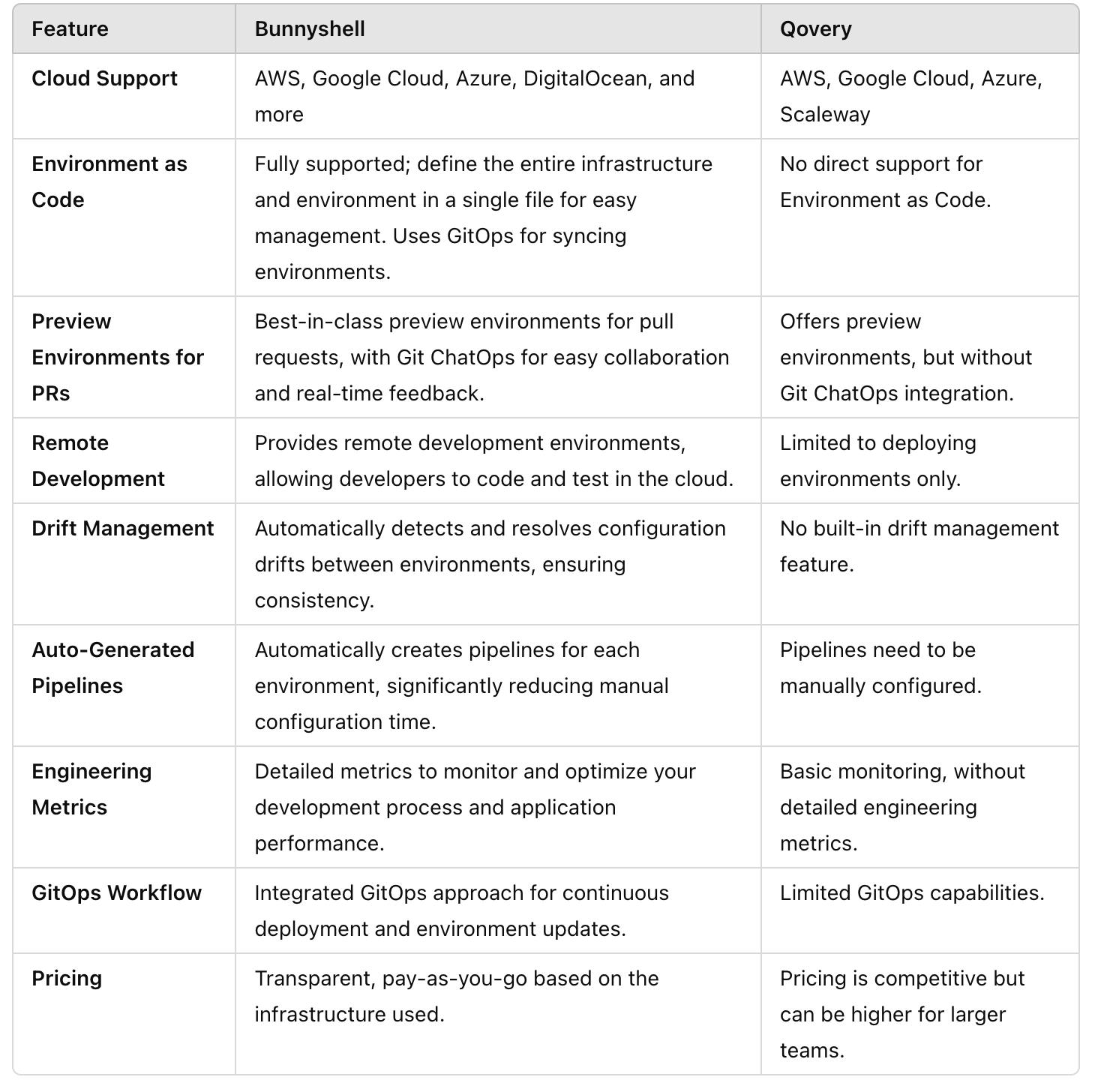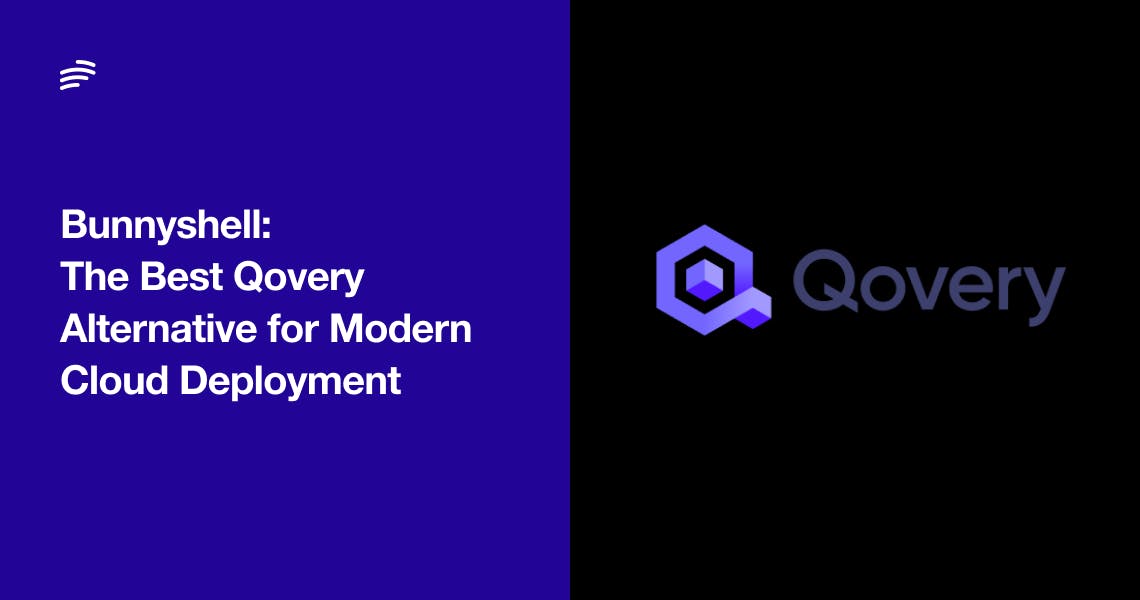When it comes to automating DevOps processes and managing cloud environments, both Bunnyshell and Qovery have gained significant traction. While both platforms provide multi-cloud deployment, automation, and developer-friendly interfaces, there are key differences between the two. Bunnyshell offers several advanced features that make it a standout alternative to Qovery, particularly for teams seeking more control, flexibility, and efficiency in managing their cloud environments.
In this article, we’ll dive into the differences between Bunnyshell and Qovery, highlighting the unique features Bunnyshell brings to the table and why it may be the better choice for businesses looking for a more comprehensive DevOps solution.
Bunnyshell Overview
Bunnyshell is a cloud-agnostic platform that simplifies DevOps by providing powerful tools for deploying, managing, and scaling applications across multiple cloud environments, including AWS, Google Cloud, Azure, and DigitalOcean. It offers advanced capabilities such as Environment as Code, automated pipelines, and preview environments to streamline the software development lifecycle.
Qovery Overview
Qovery is a platform designed to automate cloud infrastructure for applications. It supports multi-cloud deployments and helps developers focus on building features rather than managing infrastructure. Qovery’s ease of use and integration with Git make it a convenient option for developers looking to deploy applications quickly with minimal setup.
Bunnyshell vs. Qovery: Key Feature Comparison
While Qovery and Bunnyshell share many core features, Bunnyshell’s additional capabilities provide greater flexibility and control for teams focused on complex, large-scale applications or requiring robust management tools for their environments. Here’s a detailed comparison of the features that set Bunnyshell apart from Qovery:

Bunnyshell's Standout Features
1. Environment as Code with GitOps Integration
Bunnyshell’s Environment as Code feature allows you to define your full cloud infrastructure in a single configuration file. This concept simplifies infrastructure management, offering version control and reproducibility for your environments, which are crucial in DevOps workflows. It also utilizes GitOps, meaning all changes to the environment configuration can be done through Git, ensuring a smooth and consistent deployment process.
Benefit: This feature offers better control and visibility over the entire infrastructure, making it easier to manage complex environments without manually configuring every component.
2. Best-in-Class Preview Environments for Pull Requests
One of Bunnyshell’s standout features is its preview environments for pull requests, integrated with Git ChatOps. Every time a pull request is created, Bunnyshell automatically spins up a fully functional preview environment, giving teams a live environment to test and review changes before merging.
Benefit: This allows teams to quickly identify issues and collaborate in real-time, reducing deployment risks and speeding up the feedback loop.
3. Advanced Drift Management
Bunnyshell offers drift management, which detects differences or "drifts" between environments and ensures they remain in sync. This is essential for organizations running multiple environments (like dev, staging, and production) to maintain consistency and avoid misconfigurations that can lead to issues during deployment.
Benefit: This feature ensures that environments are always aligned with their intended configurations, reducing errors and manual intervention.
4. Auto-Generated Pipelines
With auto-generated pipelines, Bunnyshell removes the need for manual pipeline configuration. When a new environment is created, the system automatically generates a CI/CD pipeline based on predefined workflows. This automation saves time and reduces errors associated with manual configurations.
Benefit: Developers can focus on building and deploying features without needing to spend time setting up and managing pipelines, ensuring faster go-to-market timelines.
5. Remote Development Environments
Bunnyshell supports remote development environments, allowing developers to code, test, and run their applications entirely in the cloud. This feature ensures consistency across development and production environments, which can be particularly useful for distributed teams or those working with resource-heavy applications.
Benefit: It eliminates the "works on my machine" problem by ensuring that all development happens in a standardized, cloud-based environment.
6. Engineering Metrics
Bunnyshell provides detailed engineering metrics, allowing you to monitor application performance, identify bottlenecks, and optimize the development process. This feature ensures that you have visibility into both infrastructure and application health.
Benefit: These insights help teams make data-driven decisions to improve application performance and development workflows.
If you're managing multiple environments, need full GitOps integration, or require deeper control and automation over your infrastructure, Bunnyshell offers a more comprehensive solution.
Create a Free Bunnyshell Account
Get started with Bunnyshell today and deploy your applications seamlessly across any cloud platform. Enjoy powerful automation and multi-cloud flexibility without the hassle – no credit card required!
